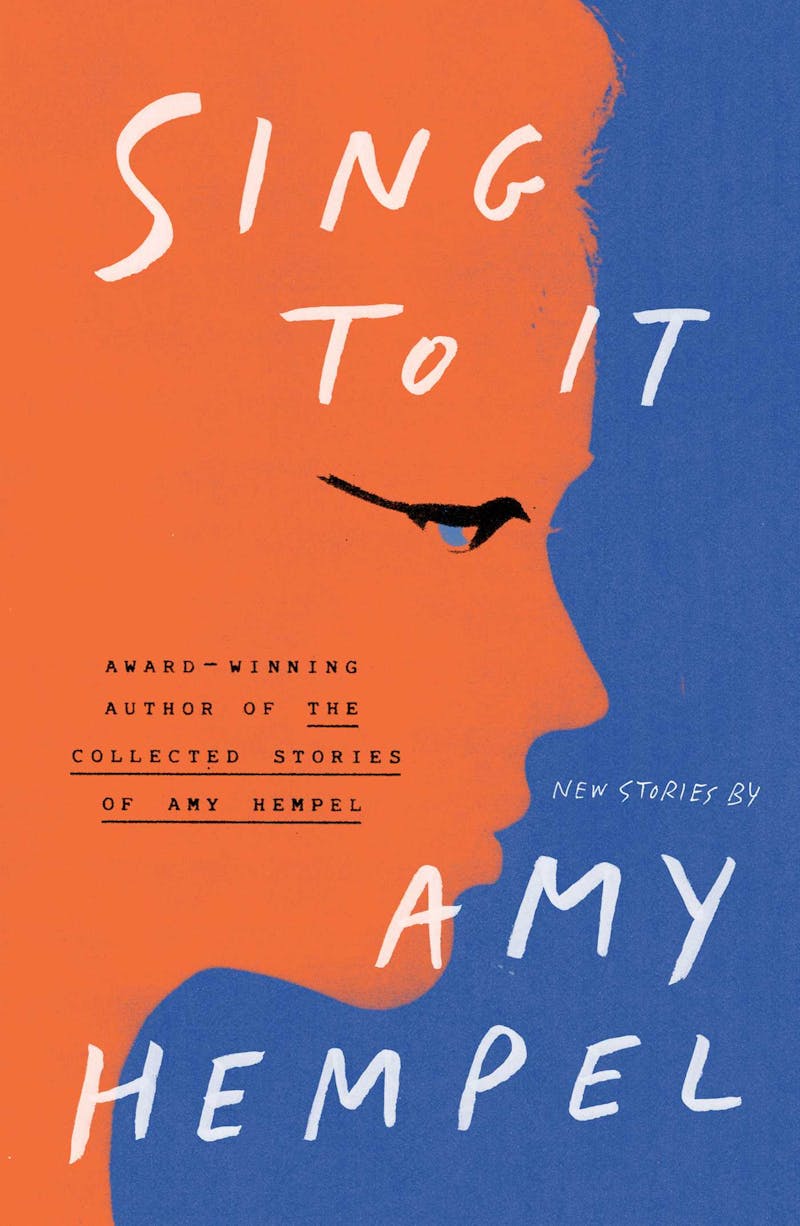In “The Cemetery Where Al Jolson Is Buried,” Amy Hempel’s first and most anthologized story, the narrator fails her terminally ill best friend, almost entirely in subtext. She visits the beachside hospital, bearing welcome, “useless” jokes, but when an extra bed appears for her to stay the night, she panics and decides to go home. Hempel doesn’t give us the final goodbye, or the bad-news call, or any of the other obvious scenes a “maximalist” writer might dramatize. Instead, we get the tacit admission that the narrator bailed before the end, enrolling in a “Fear of Flying” class the same morning her friend is buried.

“I think my favorite compliment that I got from a writer early on,” she told The Paris Review in 2003, “was someone saying to me, You leave out all the right things. That was wonderful to hear. To know you’ve given your reader credit for being able to understand without you having to say it.” This strategy, honed in Gordon Lish’s Columbia workshop in the 1970s, has produced a radically compressed output, which critics often term “minimalist.” Hempel doesn’t write long, but she packs a lot into every sentence. The Collected Stories of Amy Hempel, released in 2006, contains the full text of her four previous collections, Reasons to Live (1985), At the Gates of the Animal Kingdom (1990), Tumble Home (1997), and The Dog of the Marriage (2005). It’s barely 400 pages.
Generally narrated by aloof, single women, Hempel’s stories feel at once personal and private. Often, they circle a health crisis that’s too painful to narrate directly. “‘I can’t remember,’” the dying friend quips in “Al Jolson,” “‘What does Kubler-Ross say comes after denial?’” The stories of Sing to It, her first collection in 13 years, come in the same compacted style, and they take the same post-traumatic position, simultaneously talking about grief and not talking about it. But if, in the 1980s, Hempel’s compression registered as a kind of refusal or withdrawal, implicitly rejecting the longwinded chauvinisms of Updike and Roth, her economy today constitutes a form of resilience.
In every respect, Sing to It is vintage Hempel. It contains 15 stories, five of which are a page or less. Five more make it onto a second page. One reaches a third, and three others, like “The Cemetery Where Al Jolson is Buried,” test our endurance at seven-to-eleven pages. The final piece is a 63-page novella titled “Cloudland,” but even this apparent departure conforms to her recent pattern; Tumble Home and The Dog of the Marriage both end with novellas, too.
All of Hempel’s regular preoccupations appear in these stories: dogs (she fosters and trains service animals), jokes (she spent a lot of time in San Francisco comedy clubs in the 1970s), and trauma (her mother committed suicide when she was 19, her best friend died of leukemia in her twenties, and she herself survived two car accidents). Her narrators, too, are the same women they’ve always been, living contingently in temporary digs, doing temporary jobs, observing a tabloid world with grim hilarity. In the absence of parents or children, it can be hard to tell how old a Hempel narrator is, only that she has a past marked by crisis and loss.
The first line of “The Correct Grip,” cuts straight to the point: “A few days after the attack, the wife of the stranger who attacked me called me on the phone.” We get their odd, unsettling conversation, culminating in the wife’s enthusiastic offer to buy the narrator lunch. Then we segue back to an earlier call, from a friend with a broken ankle whose dog had gotten help. “I told her my dog would’ve done the same thing for me,” the narrator says in a standalone paragraph, “only stopping first to knock over trash cans and try to get laid.” She feels simultaneously proud and “dismayed by my impulse to make fun of rescue,” ending with a description of “the correct grip” on a dog’s leather leash: “It strengthens the hand when you form a fist for when the proverbial pendulum swings the hell back.”
It’s easy to imagine another, perhaps more popular, treatment of the same material. It would surely involve the scene of the attack, and the vicious character of the attacker, or at the very least a scene or two revealing the specific nature of the narrator’s trauma—her inability to connect with the current man in her life, her somewhat disproportionate reaction when something happens to her dog—followed by a scene that signifies healing and acceptance. But Hempel prefers to focus on the aftermath of catastrophes rather than the catastrophes themselves, on the absences and silences they create as well as the details through which we see them. It’s telling that Hempel’s greatest fans tend to be writers themselves—people as interested in privacy, note taking, and the arrangement of words as they are in the story being told.
“Cloudland,” the long last story in Sing to It, has the quality of an epic, and is, like much of Hempel’s work, narrated by a single woman on the run from failure and loss. “I remember thinking: There will come a time when I will not be thinking of this,” the first fragment reads. “And I was right. And I was wrong.” It is perhaps the one story in the collection a reviewer can spoil, so I’ll just say that the “this” the story thinks through has to do with a child the narrator long ago gave up for adoption. The reveal is slow and circuitous, delivered in Hempel’s characteristic fragments, simultaneously Delphic and self-deprecating:
I have heard jokes about impossible things to joke about: the Holocaust, AIDS, the attack on the Twin Towers. Shouldn’t I have heard a joke by now about what I did? Not to say it would be the equal of these horrors. Just that the joke, were there a joke to be made, would have been on me. Would have been at my expense. And rightly so.
In other fragments, we learn about her bumper sticker (“I BRAKE JUST LIKE A LITTLE GIRL”), the ramshackle house she rents in north Florida, and various local plants and snakes. We learn about the Victorian-style maternity home in Maine where she delivered, then gave up, her child, and we learn about “Cloudland,” a painting she owns of “four faceless girls in white dresses” fleeing a gathering storm. More images of girls in peril and ecological destruction mount, until the awful, unspoken thing finally demands to be said.
Like the best Hempel stories, “Cloudland” swallows female pain and speaks of it at the same time. It figures danger, failure, and grief as inescapable features of life, and of women’s lives in particular. And it’s not even especially depressing:
At a frozen yogurt place, I stood in line behind a woman holding a baby, about a year old, and dressed in a diaper. I watched as the mother carried the baby up to the flavor I planned to get, and coaxed the chubby fingers to touch the spouts where the yogurt came out, so the baby could feel the icy peaks of chocolate and vanilla left over from the last person who got some. I looked at the store attendant, like do something, but the attendant—a teenage girl in a uniform—smiled at the mother and the diapered baby. What the hell was wrong with them? Or what was wrong with me? No, what was wrong with them?
This is a Hempel narrator, after all: dreamy, quick-witted, toggling between tenderness, irony, and rage. She fantasizes about alternate lives and indicts the responsible parties, but without ever letting herself off the hook. Ultimately, “Cloudland” is a portrait of a woman’s pain, a story that actually seems to live in that pain: the constant presence of it, but also the casual resilience it demands.
The narrator of “Cloudland” is a former schoolteacher and current home health aide. Another narrator works at a shelter that euthanizes dogs. These jobs are not incidental; Hempel understands care-giving as a means of survival and even regeneration. In “Fort Bedd,” the narrator dreams of reforestation while caring for her dying partner, fantasizing she’ll “Plant windbreak, woods, a forest, a glen.” These women continue to work and think and joke, even in the face of unbearable realities—that we’ve plundered our planet, that we’ll lose our families—and they do so in a language that reminds us of our smallness, challenging the notion that we’re the heroes of our own lives.
Consider the title story. Running only a half-page, “Sing to It” is another paean to a dying friend:
At the end, he said, No metaphors! Nothing is like anything else. Except he said to me before he said that, Make your hands a hammock for me. So there was one.
It’s the very first paragraph of the collection, telling us, immediately, that we won’t escape loss. Nor does this narrator flee. Instead, she manages, as so many Hempel narrators have done since “Al Jolson,” to provide the care that’s needed. She makes her hands a hammock—“My arms the trees”—and calls up an Arab proverb: “When danger approaches, sing to it.” There’s nothing especially heroic happening here, and there’s plenty that Hempel leaves out—the man’s affliction, the nature of their relationship, the narrator’s grief. What we get, instead, is a woman intimate with danger, accepting it, and offering her own metaphor for living through it, crafted from the smallest, strongest words.
